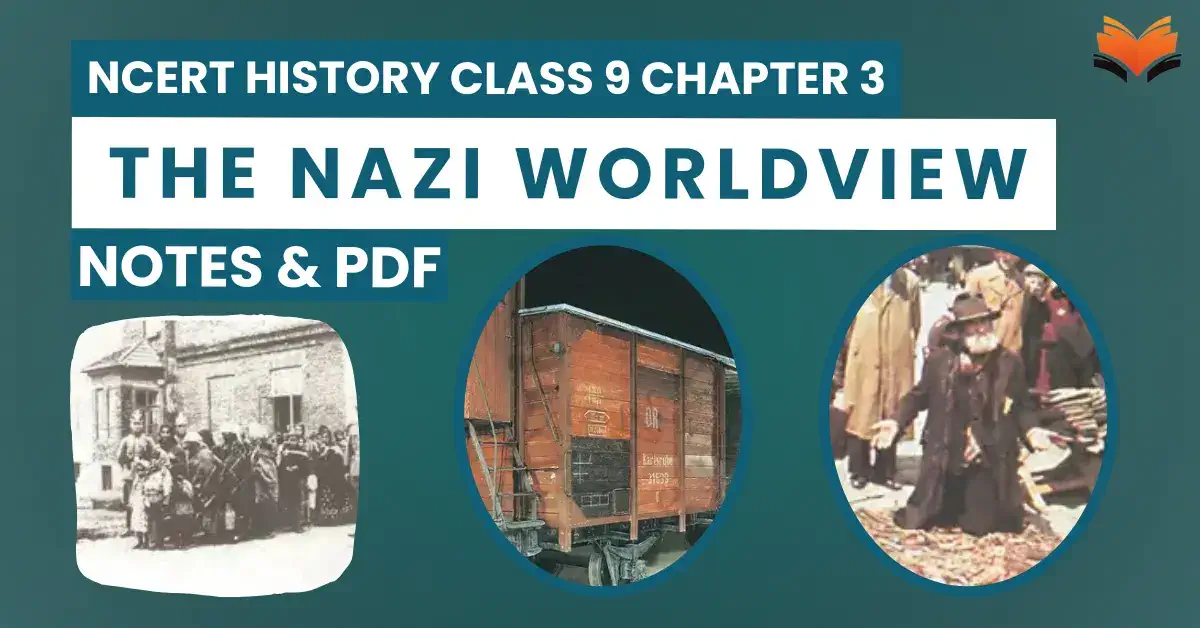The Nazi Worldview – Concept & Notes PDF
Topic & sub-topics covered: The Nazi Worldview and MCQs Questions: Nazism and the Rise of Hitler (All single detail notes are exam-oriented).
We have discussed in-depth and exam-oriented pointers that can be asked in the board exam of class 9th about the “The Nazi Worldview” from the NCERT History notes for class 9th chapter 3rd “Nazism and the Rise of Hitler“.
Download the NCERT History for Class 9th Chapter 3 Nazism and the Rise of Hitler Notes PDF
NCERT History for Class 9th Chapter 3_ Nazism and the Rise of Hitler Notes & MCQ’s Question-Answer
Have you ever wondered how a failed artist like Hitler ended up becoming the dictator of all Germany? Class 9 NCERT History Chapter 3 “Nazism and the Rise of Hitler” tells exactly that story. When I first read it, I was honestly shocked by how bad things got in Germany after the Treaty of Versailles – crushing debt, unemployment, and hopelessness everywhere. Imagine the 1930s: people struggling to survive, feeling betrayed and angry… and then comes one man who turns all that frustration to his advantage. These notes capture the key events, from Nazi propaganda to the persecution of Jews, in a way that’s quick to revise but still gives you the “feel” of that time.
Download the NCERT History Class 9 Chapter 3 Nazism and the Rise of Hitler Notes PDF to make your exam preparation clear and effective. These notes explain the historical background of Germany after World War I, the rise of Adolf Hitler, and the impact of Nazi ideology on society and politics. Download now and strengthen your understanding of one of the most significant and impactful chapters in modern world history for Class 9.
The Nazi Worldview

1. Basis of Nazi Crimes:
- Nazi crimes were rooted in a system of belief and set of practices.
- Nazi ideology = Hitler’s worldview.
2. Racial Hierarchy in Nazi Ideology:
- No equality among people → strict racial hierarchy.
- Top: Blond, blue-eyed Nordic German Aryans.
- Lowest: Jews (seen as “anti-race” and arch-enemies of Aryans).
- Others: Coloured people placed in between based on physical features.
3. Influence of Scientific Racism:
- Hitler’s racism drew from:
a. Charles Darwin – Theory of evolution & natural selection (plants/animals).
b. Herbert Spencer – Idea of survival of the fittest. - Darwin’s ideas were misused by racist thinkers & politicians to justify imperial rule.
- Nazi belief:
a. Strongest race survives, weak races perish.
b. Aryan race = pure, superior, destined to dominate the world.
4. Concept of Lebensraum (Living Space):
- New territories needed for settlement.
- Goals:
a. Increase area of mother country.
b. Keep settlers connected to homeland.
c. Enhance material resources and national power.
5. Geopolitical Expansion Plans:
- Extend German boundaries eastwards.
- Concentrate all Germans in one geographic area.
- Poland used as the testing ground for Lebensraum policy.
Source A – Hitler’s View on Territorial Conquest (Secret Book)
- Hitler believed land was not gifted but earned through courage, strength, and hard work.
- Providence (divine will) granted land to those brave enough to conquer it.
- The primary right in the world was the right to life, but only for those strong enough to claim it.
- A vigorous nation would expand territory to match its population needs.
Source B – Hitler’s View on World Power (Mein Kampf)
- Hitler argued that global power could not be achieved by a nation with limited territory.
- Criticised the idea of Germany being a great power while having only 500 km² of territory.
- Believed large land area was essential to match other world powers controlling vast continents.
Establishment of the Racial State
1. Nazi Goal: Exclusive Racial Community:
- Nazis aimed to create a racially pure German society of only “pure and healthy Nordic Aryans”.
- Aryans were considered the only “desirable” people in the Nazi empire.
- Even Germans who were seen as impure or abnormal had no right to exist.
2. Euthanasia Programme:
- Policy to eliminate mentally or physically unfit Germans.
- Example: Helmuth’s father, along with Nazi officials, condemned many to death under this programme.
3. Other ‘Undesirable’ Communities:
- Not only Jews – Nazis targeted others as well:
a. Gypsies and blacks → considered racial ‘inferiors’.
b. Russians and Poles → considered subhuman, undeserving of humanity. - In occupied Poland and Russia:
a. Civilians forced into slave labour.
b. Many died due to hard work and starvation.
4. Nazi Hatred of Jews:
- Rooted partly in traditional Christian hostility:
a. Stereotyped as killers of Christ and usurers.
b. Barred from owning land in medieval times → survived through trade and moneylending.
c. Lived in ghettos (separately marked areas).
d. Faced persecution, violence, and expulsions. - Hitler’s hatred based on pseudoscientific racial theories:
a. Belief: Conversion was not a solution to the “Jewish problem”.
b. Solution: Total elimination of Jews.
5. Phases of Persecution of Jews:
- 1933–1938:
a. Jews terrorised, pauperised, segregated.
b. Forced to leave Germany. - 1939–1945:
a. Jews concentrated in specific areas.
b. Eventually killed in gas chambers in Poland.
The Racial Utopia
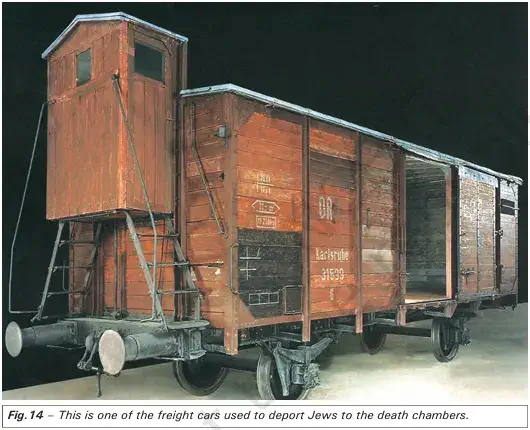
1. Nazi Racial Utopia under War:
- During World War II, Nazis worked to realise their racial ideal.
- Genocide and war were treated as two sides of the same coin.
2. Division of Occupied Poland:
- North-western Poland: Annexed to Germany.
- Remaining area: Named the General Government, destination for all ‘undesirables’.
- Poles were forced to leave homes and property → these were taken over by ethnic Germans brought from other occupied territories.
3. Treatment of Poles:
- Polish intelligentsia (educated and influential people) were murdered in large numbers to keep the population intellectually and spiritually weak.
4. Nazi ‘Race Testing’ of Children:
- Polish children with Aryan-like features were:
a. Forcibly taken from their mothers.
b. Examined by race experts.
c. If passed → raised in German families.
d. If failed → sent to orphanages, where most died.
5. General Government as a Killing Field:
- Contained some of the largest ghettos and gas chambers.
- Became a major site of Jewish extermination.
STEPS TO DEATH
1. Stage 1 – Exclusion (1933–1939):
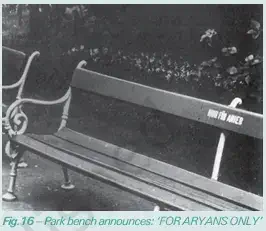
Slogan: “You have no right to live among us as citizens”
- Nuremberg Laws of 1935:
a. Only people of German or related blood could be German citizens.
b. Jews excluded from citizenship and imperial protection.
c. Marriages between Jews and Germans forbidden.
d. Extramarital relations between Jews and Germans criminalised.
e. Jews forbidden to fly the national flag. - Other legal measures:
a. Boycott of Jewish businesses.
b. Expulsion from government jobs.
c. Forced sale and confiscation of Jewish property. - Violence and Pogrom (November 1938):
a. Known as Kristallnacht (Night of Broken Glass).
b. Jewish properties vandalised and looted.
c. Homes attacked, synagogues burnt.
d. Jewish men arrested.
2. Stage 2 – Ghettoisation (1940–1944):
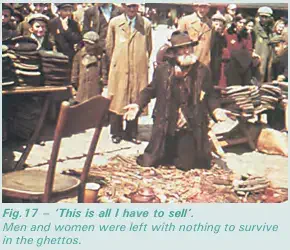
Slogan: “You have no right to live among us”
- From September 1941:
a. All Jews had to wear a yellow Star of David on their chest.
b. Identity mark stamped on passports, legal papers, and homes. - Jews confined to Jewish houses in Germany and ghettos (Lodz, Warsaw in the east).
- Ghettos marked by extreme poverty and misery.
- All wealth confiscated before entering ghettos.
- Ghettos became overcrowded with hunger, starvation, disease, and poor hygiene.
3. Stage 3 – Annihilation (1941 onwards):
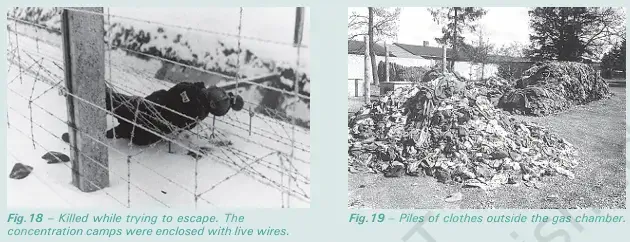
Slogan: “You have no right to live”
- Jews from ghettos, concentration camps, and Jewish houses transported by goods trains to death factories.
- Major killing centres in Poland: Belzek, Auschwitz, Sobibor, Treblinka, Chelmno, Majdanek.
- Victims killed in gas chambers within minutes.
- Mass killings executed with scientific precision.
New words:
- Nordic German Aryans – One branch of those classified as Aryans. They lived in north European countries and had German or related origin.
- Gypsy – The groups that were classified as ‘gypsy’ had their own community identity. Sinti and Roma were two such communities. Many of them traced their origin to India.
- Pauperised – Reduce to absolute poverty.
- Persecution – Systematic, organised punishment of those belonging to a group or religion.
- Usurers – Moneylenders charging excessive interest; often used as a term of abuse.
- Synagogues – Place of worship for people of Jewish faith.
Next & Previous Topics of NCERT/CBSE History Class 9 Chapter 3: Nazism and the Rise of Hitler
| Topics No. | Topics Name |
|---|---|
| 1 | Birth of the Weimar Republic |
| 2 | Hitler’s Rise to Power |
| 3 | The Nazi Worldview |
| 4 | Youth in Nazi Germany |
| 5 | Ordinary People and the Crimes Against Humanity |
MCQs on NCERT History Class 9 Chapter 3 Topic – The Nazi Worldview
Here are the top exam-oriented MCQ-type questions on “The Nazi Worldview” that you should prepare for your CBSE or state board exams:
Question 1. Which race did Nazi ideology place at the top of the racial hierarchy?
a) Nordic German Aryans – blond, blue-eyed
b) Jews – considered anti-race
c) Gypsies – considered racial inferiors
d) Russians – considered subhuman
Answer: a) Nordic German Aryans – blond, blue-eyed
Question 2. According to Nazi ideology, who were considered the “arch-enemies” of the Aryans?
a) Russians
b) Jews
c) Poles
d) Gypsies
Answer: b) Jews
Question 3. Which thinkers influenced Hitler’s racial ideas?
a) Karl Marx and Friedrich Engels
b) Charles Darwin and Herbert Spencer
c) Voltaire and Rousseau
d) Sigmund Freud and Albert Einstein
Answer: b) Charles Darwin and Herbert Spencer
Question 4. What concept did Herbert Spencer add to Darwin’s theory?
a) Natural law
b) Social equality
c) Survival of the fittest
d) Class struggle
Answer: c) Survival of the fittest
Question 5. What was the Nazi argument based on racist interpretation of Darwin’s ideas?
a) The strongest race would survive and weak ones perish
b) All races were equal in nature
c) Survival depended only on cooperation
d) Equality would ensure survival of all
Answer: a) The strongest race would survive and weak ones perish
Question 6. What was the geopolitical concept central to Hitler’s ideology?
a) Anschluss
b) Lebensraum – living space
c) Blitzkrieg – lightning war
d) Gestapo – secret police
Answer: b) Lebensraum – living space
Question 7. Which country became the “laboratory” for Hitler’s Lebensraum experiment?
a) Austria
b) Poland
c) France
d) Czechoslovakia
Answer: b) Poland
Question 8. What was the main aim of the Nazi Euthanasia Programme?
a) Deporting Jews to other countries
b) Killing Germans considered mentally or physically unfit
c) Providing healthcare to soldiers
d) Purifying air and water resources
Answer: b) Killing Germans considered mentally or physically unfit
Question 9. Which communities, apart from Jews, were considered “undesirable” by the Nazis?
a) Russians, Poles, Gypsies, and blacks
b) Italians, Japanese, and Austrians
c) British and French
d) Americans and Canadians
Answer: a) Russians, Poles, Gypsies, and blacks
Question 10. What historical prejudice contributed to Hitler’s hatred of Jews?
a) Jews were seen as killers of Christ and usurers
b) Jews were considered political enemies
c) Jews opposed World War I
d) Jews supported communism
Answer: a) Jews were seen as killers of Christ and usurers
Question 11. What were Jewish living areas called in medieval times?
a) Camps
b) Ghettos
c) Colonies
d) Barracks
Answer: b) Ghettos
Question 12. What was the first phase (1933–1939) of Nazi persecution of Jews called?
a) Annihilation
b) Ghettoisation
c) Exclusion
d) Deportation
Answer: c) Exclusion
Question 13. Which laws of September 1935 stripped Jews of German citizenship?
a) Weimar Constitution
b) Nuremberg Laws
c) Berlin Decrees
d) Munich Agreement
Answer: b) Nuremberg Laws
Question 14. What was the pogrom of November 1938 called?
a) The Long Night
b) The Great Purge
c) The Night of Broken Glass – Kristallnacht
d) The Black Friday
Answer: c) The Night of Broken Glass – Kristallnacht
Question 15. What identity mark did Jews have to wear from September 1941?
a) Red Cross symbol
b) Yellow Star of David
c) Green triangle
d) White armband
Answer: b) Yellow Star of David
Question 16. What was the second stage (1940–1944) of Nazi persecution of Jews called?
a) Ghettoisation
b) Deportation
c) Assimilation
d) Purification
Answer: a) Ghettoisation
Question 17. What was the third stage (1941 onwards) of Nazi persecution called?
a) Resettlement
b) Annihilation
c) Deportation
d) Isolation
Answer: b) Annihilation
Question 18. In which ghettos were Jews confined in extreme misery?
a) Lodz and Warsaw
b) Berlin and Hamburg
c) Munich and Frankfurt
d) Vienna and Prague
Answer: a) Lodz and Warsaw
Question 19. Which method was primarily used for mass killing of Jews in death factories?
a) Shooting
b) Hanging
c) Gas chambers
d) Burning alive
Answer: c) Gas chambers
Question 20. Which were some major Nazi death camps in Poland?
a) Belzek, Auschwitz, Sobibor, Treblinka, Chelmno, Majdanek
b) Dachau, Buchenwald, Bergen-Belsen
c) Ravensbrück, Mauthausen, Flossenbürg
d) Sachsenhausen, Neuengamme, Natzweiler
Answer: a) Belzek, Auschwitz, Sobibor, Treblinka, Chelmno, Majdanek

